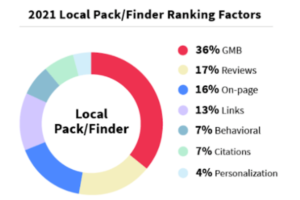Hey, My name is Marc Moeller, I am the SEO director & Founder of my SEO agency called Ecomexperts, located in Perth, Western Australia. Ecomexperts provides SEO services for international e-commerce brands, as well as local businesses in Australia.
I, Marc Moeller, also run a successful Youtube SEO channel, where I teach search engine optimisation. The handle of my channel is @moellerseo.

Part 1 – What happened during the March 2024 Google Algo Update?
Google Core Update March 2024:
- The update is more complex, aiming to reduce unhelpful and non-original content by 40%.
- Helpful content system now part of the core update, no more HCU announcements.
- Rankings may fluctuate more due to changes in multiple core systems.
Google Spam Update March 2024:
- SEO Influencers Hit: All sites in the same GSC account.
- Introduction of new spam policies to counter manipulative content practices including AI and expired domain abuses.
- Focus on combating scaled content abuse and low-quality, duplicate content.
- PBNs/GP Farms: Actions against misuse of expired domains to prevent leveraging past credibility for subpar content.
- Parasite SEO: Stricter scrutiny on-site reputation abuse to prevent publishing third-party content for ranking manipulation.
Parasite SEO Warning March 2024:
- Google issued a two-month warning for sites hosting low-quality parasite posts. Unfair because small sites got handed the ban hammer today, and big sites got a warning with 2 months’ time – it would be nice if small sites got that too.
- The warning targets “Parasite SEO,” where content is posted on high-authority sites to boost rankings.
- The term “Parasite SEO” is recognized by the SEO community, not internally by Google.
Fairness of Google’s Warning Approach:
- Provides an opportunity for websites to correct their practices in line with Google’s guidelines.
- Serves an educational purpose, highlighting the value of quality content over manipulative SEO.
- Allows for gradual enforcement, giving webmasters time to adapt without immediate harsh penalties.
Part 2 – The Engineering Details
Initial Observation:
- Websites with weak brand entities were targeted, and those lacking business justification for content creation were at risk.
- Proof: Eric Schmidt, ex-CEO of Google (2001-2011), articulated the importance of brands online, stating, “Brands are the solution, not the problem…brands are how you sort out the cesspool.”
- Reasoning: Google’s intent is to prioritize reputable content sources and diminish the visibility of spammy or low-value content.
- Background: Google’s historical updates have consistently aimed to refine search results to reward strong brands and penalize manipulative web entities.
How you get on Google’s radar (for content spam):
- Sites focused on trying to rank for low-difficulty queries.
- High publishing frequency (i.e., news sites, celebrity sites, query pattern abuse sites i.e., how many calories in XYZ).
Application of Filters (for content AI articles spam):
Using the below filters, Google’s algo decides if the website meets the criteria for algorithmic (algo) or manual action penalty:
- Brand age.
- Design (total human effort).
- The identity of the people behind the brand.
- The brand’s purpose.
- Poor user satisfaction signals.
- Brand strength (i.e., how many people search your brand).
- Truth ranges.
- Authoritativeness (based on backlinks).
- Expertise (based on content depth).
- Proof: The emphasis on E-A-T (Expertise, Authoritativeness, Trustworthiness) in Google’s Search Quality Evaluator Guidelines reflects these filters.
- Reasoning: These criteria help Google assess the validity and value of a brand or website.
- Background: Google’s algorithm increasingly relies on trust signals to filter out deceptive or low-quality content.
Application of Filters
Google filters websites to see if the website deserves a penalty. These apply to both link farm spam & content spam:
- Articles not targeting queries.
- Outbound links (OBL) to low-authority sites.
- OBL to spam niches (casino, CBD, etc.).
- Content diversity, not sticking to one topic.
- Low-quality content (not getting impressions/clicks).
- No custom images.
- No human effort gone into articles.
- No schema.
- No relationship of topic posted back to brand.
Consequences:
- Sites not exhibiting authentic brand characteristics that satisfy users are at risk of being de-indexed.
- Proof: The observed pattern of de-indexing aligns with Google’s historical preference for established brands in search results.
- Reasoning: Google’s mission is to connect users with trustworthy content from credible sources.
- Background: An increase in inauthentic and low-quality web content necessitates stricter filtering measures by search engines.
AI vs Human Written Articles – What did the update target?
- The March 2024 core update affected both AI-generated and human-written content.
- Proof: Reports from webmasters and SEO professionals post-update indicate impacts across different types of content.
- Reasoning: Google seeks to assess content quality irrespective of its origin.
- Background: The advent of AI in content creation has prompted Google to adapt its approach to content valuation.
Manual Penalties Review Process & Relationship to Algorithm:
- Sites flagged by Google’s algorithm are reviewed by humans before manual penalties are applied.
- Proof: Google’s documentation and guidelines, as well as statements from Google spokespeople, describe the manual review process.
- **Reason## Google’s Core & Spam Update March 2024 from an Engineering Perspective
Part 3: Actionable Tips to Surive the next update
Brand Attributes Checklist:
- Consistent Branding: Ensure your brand has a professional logo and consistent design across all platforms.
- User Engagement: Encourage user interaction with your brand both on and off your website.
- Search Demand: Cultivate brand awareness that leads to users actively searching for your brand name.
- Website Metrics: Aim for high dwell time and successful last actions (e.g., sign-ups, purchases) on your site. End search on your site.
Publish Press Releases:
- Craft and distribute press releases to high-authority news sites like Yahoo, MSN, Bloomberg.
- Include backlinks to your website, YouTube channel, Twitter profile, and Crunchbase page to enhance your brand’s visibility and authority.
Setup Branded Social and Company Profiles, Maintain Them:
- Real brands have socials, simple.
Use HARO for Backlinks:
- Sign up for Help a Reporter Out (HARO) to provide expert insights to journalists.
- Gain high-quality backlinks from reputable news sources when cited.
Perform Competitor Backlink Analysis:
- Analyze your competitors’ backlink profiles to identify linking opportunities.
- Reach out to those sites to secure backlinks for your own site.
- Reason: Backlink EAT part is still active. But forget about crap links.
Host Webinars or Online Workshops or Events, Sponsorship:
- Organize webinars or workshops with industry experts.
- Use the event promotion to generate backlinks and social shares.
Final Tip:
- Google renders web pages during indexing.
- They generate a screenshot of your website using chrome browsers.
- This screenshot is fed into an LLM (similar to GPT) to give your site a design score.
- This score goes from 0 for no design or human effort put in at all to 10 for a sophisticated design that relates to the main brand and topic, which currently can only be achieved with human effort.



